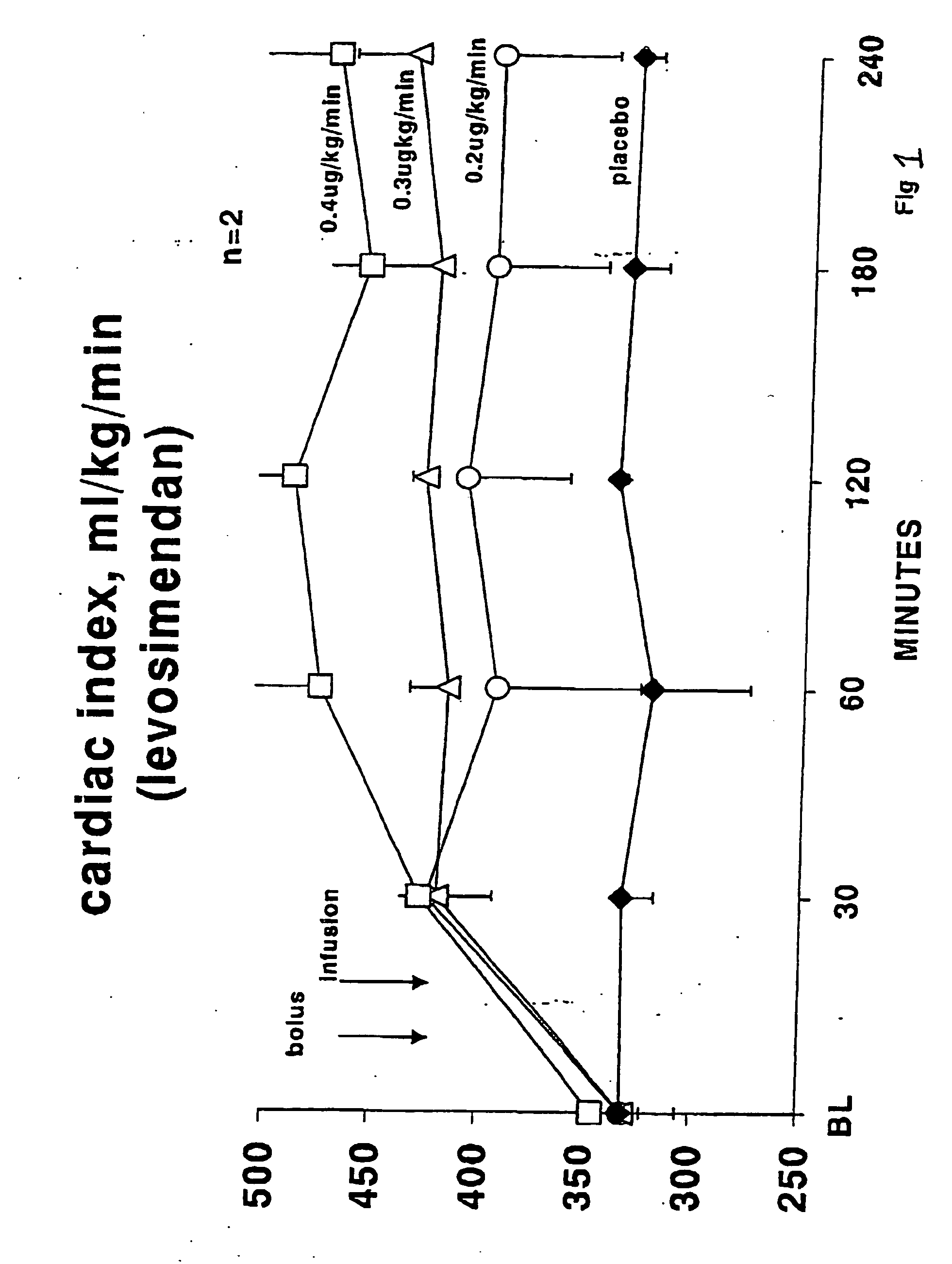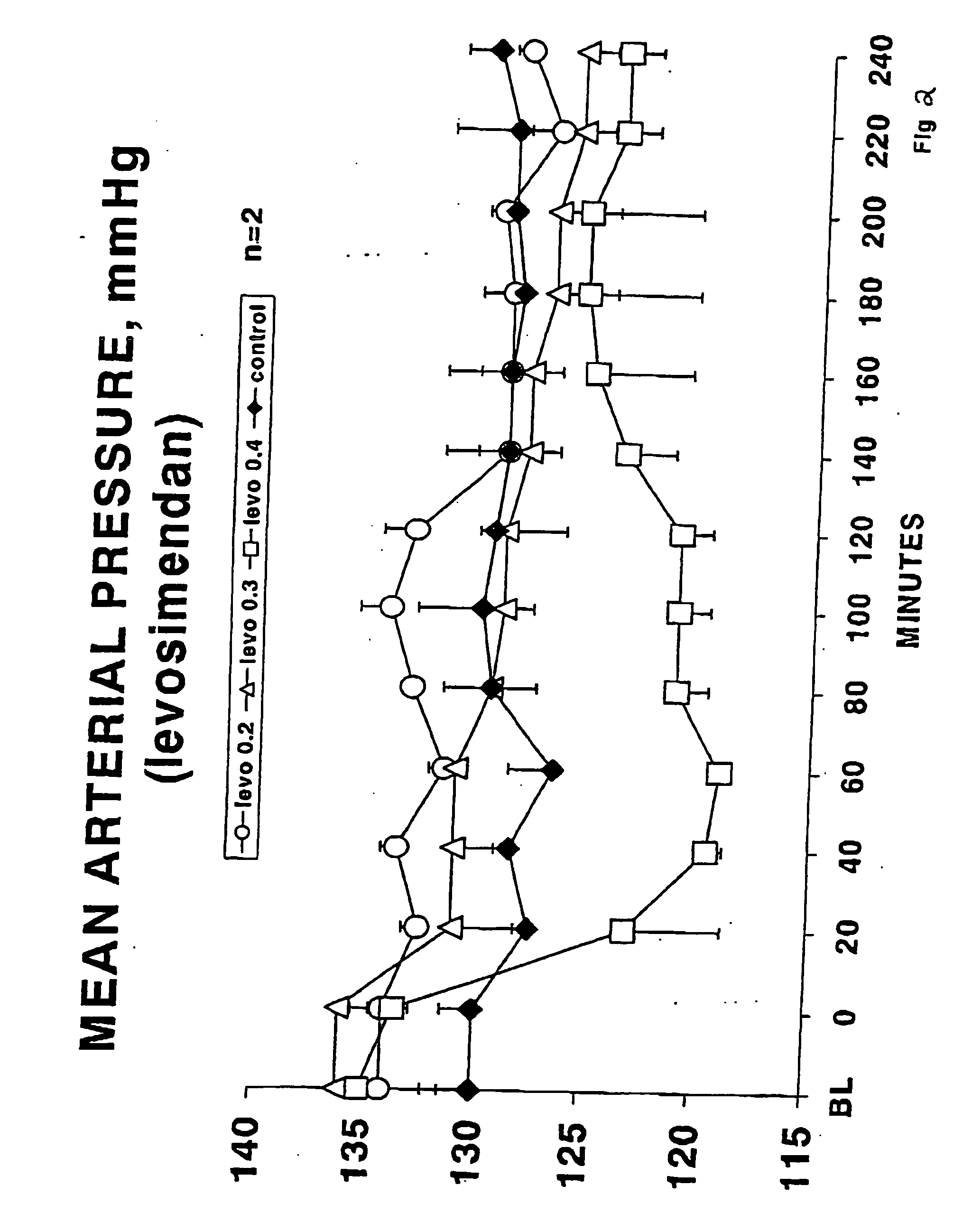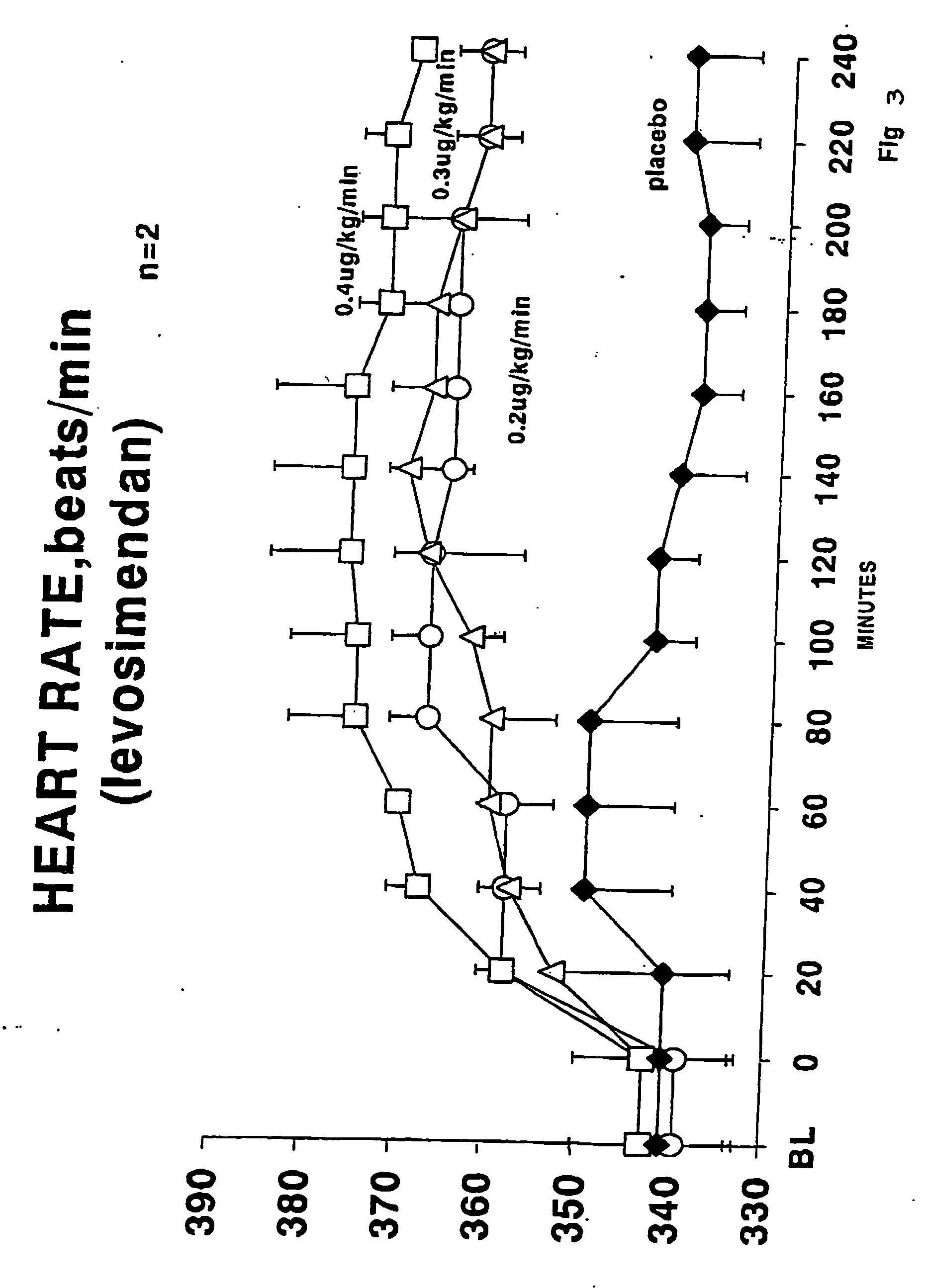Methods for treating a mammal before, during and after cardiac arrest
a mammal and cardiac arrest technology, applied in the field of mammal treatment methods before, during and after cardiac arrest, can solve the problems of 5% or one of 8 out-of-hospital successfully resuscitated patients survive hospitalization, the difficulty of engendering a response to advanced cardiac life support (acls) protocols including defibrillation, and the increase of myocardial injury and dysfunction, so as to reduce the frequency of defibrillation shock
- Summary
- Abstract
- Description
- Claims
- Application Information
AI Technical Summary
Benefits of technology
Problems solved by technology
Method used
Image
Examples
example 1
Use of Levosimendan For Treating Myocardial Dysfunction in a Mammal Resuscitated After Suffering Cardiac Arrest
[0091] All animals received humane care in compliance with the Principles of Laboratory Animal Care formulated by the National Society for Medical Research and the Guide for the Care and Use of Laboratory Animals prepared by the Institute of Laboratory Animal Resources and Published by the National Institutes of Health (NIH publication 86-32, revised 1985).
[0092] Methods: Male Sprague-Dawley rats weighing 500-550 g were fasted overnight except for free access to water. The animals were anesthetized by intraperitoneal injection of pentobarbital (45 mg / kg). Additional doses (10 mg / kg) were administrated at intervals of approximately one hour, or as required to maintain anesthesia, except that no anesthetic agents were administered for 30 minutes before induction of cardiac arrest. The trachea was orally intubated with a 14 g cannula mounted on a blunt needle with a 145° ang...
example 2
Comparison between Dobutamine and Levosimendan in Treating Post-Resuscitation Myocdardial Failure in Rats
[0099] Dobutamine is widely used for management of myocardial contractile failure following resuscitation from prolonged cardiac arrest. However, dobutamine has the potential of increasing the severity of ischemic myocardial injury. Levosimendan, an alternative inotrope, has the potential advantage of improving myocardial contractility without increasing the severity of ischemic injury. Accordingly, experiments were understaken to determine whether levosimendan would mitigate postresuscitation myocardial ischemic injury and improve outcomes in comparison with both dobutamine and placebo when administrated after resuscitation from cardiac arrest.
[0100] Animal preparation: Fifteen male Sprague-Dawley rats 450 and 550 g were fasted overnight except for free access to water. The animals were anesthetized following intraperitoneal injection of 45 mg kg−1 pentobarbital. Additional in...
example 3
Comparison between Dobutamine and Levosimendan for Treatment of Post Resuscitation Myocdardial Failure in Pigs
[0112] Experimental Preparation: The experiments were performed in the porcine model of cardiac arrest and cardiac resuscitation which has been extensively exercised. (21,22). Briefly, 15 male domestic pigs weighing between 35 and 40 kg were fasted overnight except for free access to water. Anesthesia was initiated by intramuscular injection of ketamine (20 mg kg−1) and was completed by ear vein injection of sodium pentobarbital (30 mg kg−1). Additional 8 mg kg−1 doses of sodium pentobarbital were injected to maintain anesthesia at intervals of one hour. A cuffed endotracheal tube was advanced into the trachea. Animals were mechanically ventilated with a volume of 15 mL kg−1, peak airway flow of 40 L min−1, and FiO2 of 0.2 with the aid of a volume-controlled ventilator (Model MA-1, Puritan-Bennett, Carlsbad, Calif.). End-tidal PCO2 (PETCO2) was monitored with an infrared an...
PUM
| Property | Measurement | Unit |
|---|---|---|
| energy | aaaaa | aaaaa |
| length | aaaaa | aaaaa |
| length | aaaaa | aaaaa |
Abstract
Description
Claims
Application Information
 Login to View More
Login to View More - R&D
- Intellectual Property
- Life Sciences
- Materials
- Tech Scout
- Unparalleled Data Quality
- Higher Quality Content
- 60% Fewer Hallucinations
Browse by: Latest US Patents, China's latest patents, Technical Efficacy Thesaurus, Application Domain, Technology Topic, Popular Technical Reports.
© 2025 PatSnap. All rights reserved.Legal|Privacy policy|Modern Slavery Act Transparency Statement|Sitemap|About US| Contact US: help@patsnap.com



